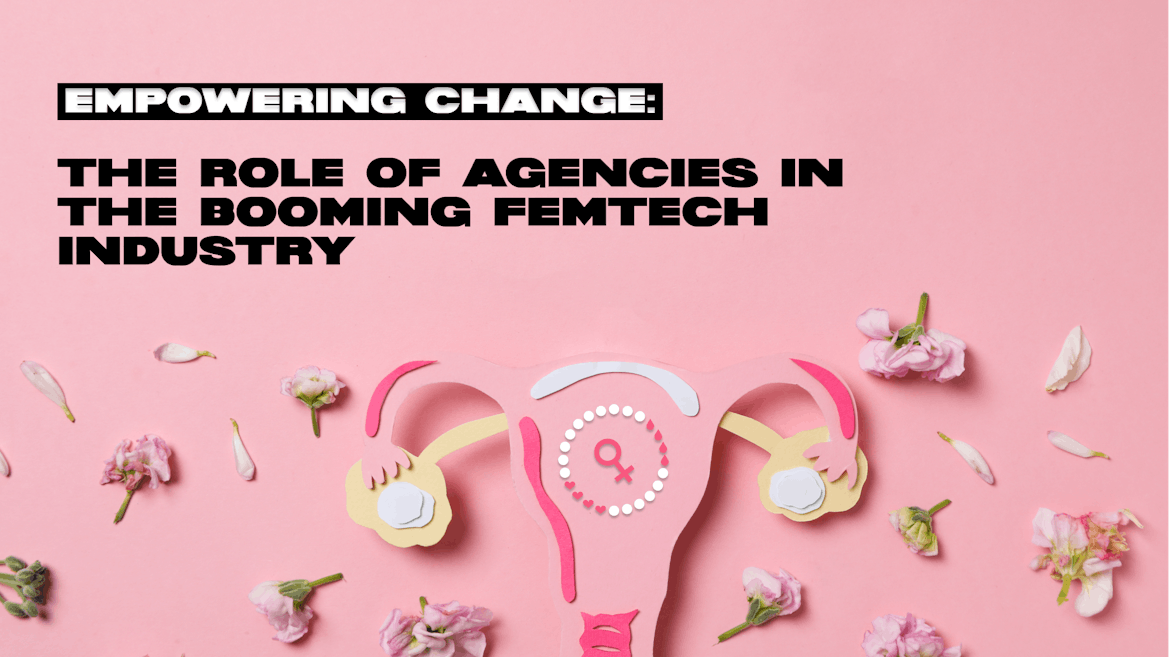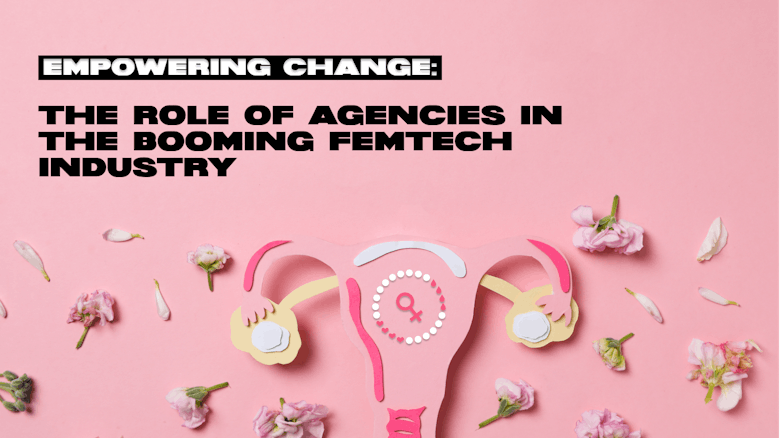
Empowering Change: The Role of Agencies in the Booming FemTech Industry
Katie DochertyThe FemTech industry has experienced a recent boom in the market. Innovative products have been supported with bold campaigns, born out of the need to address long-standing problems that women have been facing in the health industry. For agencies, this presents a unique opportunity to not only be involved in a growing sector, but to make a positive contribution to a societal issue.
Femtech as a term was coined back in 2016 by Danish entrepreneur Ina Tin, Co-Founder and CEO of the period tracker app Clue. The term refers to a wide range of technology enabled products aimed towards women’s health. However out of this has1emerged an industry and brands that are looking to alleviate two issues women face in the health industry: (i) The Gender Pain Gap and (ii) The Pink Tax.
Industry issues
Unfortunately, even in 2024, women are often misdiagnosed or underserved when seeking medical help. In response, brands such as Nurofen have been shining a light on the issue, with studies such as the Gender Pain Gap Index. There are deeper systematic issues at play too, like the fact that women are only represented in 29-34% of industry funded early phase clinical trials, despite the products being aimed at them.
By the time products have reached the stores, a whole other set of problems are introduced. Generally, advertising will fixate on the “ideal” female body, exacerbating the same insecurities the product is looking to solve. On top of that, these products will often be more expensive than the exact same product branded for men, thanks to the phenomenon known as the ‘Pink Tax’.
The good news is that against this bleak backdrop, FemTech has flourished. Brands such as Clue, Flo, Hertility and Elvie are now major players that help with issues ranging from menstrual cycles to fertility journeys, and they’re seeking to alleviate the issues of the Gender Pain Gap and Pink Tax.
How are these brands making a difference?
Hertility was founded by leading women’s health expert Dr Helen O’Neill, alongside co-founders: Ovarian Biologist Dr Natalie Getru and Chief Commercial & Legal Officer Deidre O’Neill.
They focused on building a data-powered brand with an all-female research team, addressing the lack of female representation in clinical trials and the development of products. Combined with reputation consolidating campaigns, like their recent research report and an out-of-home campaign focusing on natural female bodies, the results have been impressive: a 16% increase in recognition as an advocate for women’s health and a 14% growth in brand trust. All of this has been built on a solid foundation of strong commercial performance and growth, with the company raising £4.2 million in its seed funding round back in 2021.
Most recently, Global Workout brand Sweaty Betty have partnered with Hertility to combine the power of technology and data with their passion for movement to release their FemTech collection. With activewear “made for women, by women” - the capsule collection is guided by reproductive health data, crafted to endure menstruation, pregnancy and menopause. #TheMotherOfAllMovements, was inspired by shocking data that found 4/5 teenagers reported their period experiences had negatively impacted their relationship with exercise, this collaboration’s mission is to encourage women of all ages to “own their leaks and changing bodies”, to rediscover the joys of exercise.
Elvie has looked to leverage storytelling as a powerful marketing tool using narratives that empower and give a stage to topics that have historically been considered taboo. Their recent OOH campaign ‘peed’ on passers by to raise awareness of incontinence, an issue that affects 84% of women. The campaign used humour to challenge the status quo and did catch the eye of consumers and leading industry press outlets like The Drum, Campaign, Creative Brief and even the New York Post. They have also had strong commercial support with a total series-C funding of $97 million.
However, it’s important to note that this movement has also inspired incumbent brands in the industry to cater to the space. Holland and Barrett, a high street mainstay, recently launched their own ‘Women’s Wellness Commitment’, investing over £4 million and hiring 600 female health coaches to support and educate women who want guidance and break down stigmas.
The growth of this market is clear – femtech is working hard to make a societal impact and is leading the charge for incumbent brands to do the same. And investment trends, public discourse and consumer behaviour tells us that this sector is one to bet on for future success.
Opportunity for agencies
As an industry whose target audience equates to 50% of the global population, the opportunity goes without saying. The FemTech market itself is worth $51.8 billion globally in 2023 and is forecast to grow to over $117 billion by 2029. This is backed by consistent investment, between 2018 and 2023, where FemTech investment increased by 58%.
Focusing on the UK itself, back in 2022 there were already 145+ FemTech brands in the market and as off September 2022 total funding in the sector had reached over £563.33 million ($740 million).3
All of this leaves agencies with an opportunity to be involved in an industry which represents rapid commercial growth, but to invoke change and do what agencies do best: create bold, meaningful and memorable campaigns.
According to research from CreativeX, 57% of people featured in ads throughout 2022-23 were women. Which sounds like progress, right? But despite more representation, there’s still a long way to go in achieving equality. Women’s roles in traditional advertising can still be split into two stereotypical groups – the tantalising eye-candy, or the Stepford housewife. It’s no wonder, then that women still feel underrepresented. But by collaborating with femtech brands like Hertility or Elvie, which take a very different approach, agencies can help change the narrative. Agencies have a unique opportunity to create bold and brave campaigns which grab hold of the social discourse and steer the narrative.
For another example, look to BBH’s recent work with GIRLvsCANCER. The ad addressed sex among female breast cancer patients; but despite being bold and appealing to a very underrepresent market, the Advertising Standards Authority banned it for being inappropriate. However, that didn’t stop the conversation – and therein lies the power of bold advertising.
Overall then, agencies can (and should!) get involved in an industry promoting authentic representation, moving beyond stereotypes and portraying women in diverse and empowering roles that reflect their real-life complexities and strengths. Clever and creative advertising can create educational campaigns that resonate and help promote brands and products that inform the public on of women’s health issues. And they can do it all while getting involved in a market which is growing consistently in size, value and potential.
If you’re an agency looking to target femtech brands, Ingenuity can help. We’ve been connecting brands and agencies for nearly 20 years. Get in touch with Emma Robson, Managing Partner of Growth, to see how we could help you: emma.robson@Ingenuitylondon.com
Subscribe to Ingenuity’s content hub
Receive the latest interviews, insights and trends straight to your mailbox.

